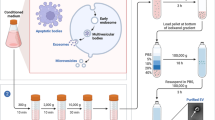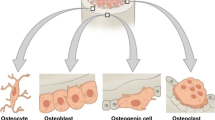Abstract
This study investigated whether gene transfer to the tendon-bone insertion site is possible during early tendon-transplant healing using viral vectors. In addition, we evaluated the optimal gene delivery technique for an in vivo adenoviral gene transfer to a tendon-bone insertion site in a bone tunnel. Twenty-six rabbits underwent a bilateral transfer of the flexor digitorum longus tendon into a bone canal in the calcaneus. The animals were divided into two groups. The first group (n=18) received a direct injection of an adenoviral vector carrying the luciferase marker gene into the tendon on the left side, while on the right side the adenoviral vector was first injected into the bone trough and the tendon was later inserted into the trough. The analysis of this experiment showed that over a 4-week period a higher luciferase activity was achieved using the bone trough immersion technique. In the second group (n=8) we therefore used the qualitative marker virus (Ad/-LacZ) with the bone trough immersion technique in order to show the site of gene expression. The histological analysis of this experiment demonstrated the presence of β-galactosidase positive cells within the tendon-bone interface over a 4-week period. Therefore we showed in the first part of this study that the bone canal provides a more efficient target for direct adenoviral gene delivery than the tendon. In the second part of the study we demonstrated the feasibility of the bone trough immersion technique since sustained gene expression within the tendon-bone interface was obtained for up to 4 weeks. This study has shown the feasibility of gene delivery to the tendon-bone interface and provides the basis for the application adenoviral delivery of growth factor genes to the tendon-bone insertion site.



Similar content being viewed by others
References
Baltzer AWA, Lattermann C, Whalen JD, Robbins PD, Evans CH (1999) Gene therapy approach to accelerate bone healing in athletes. Knee Surg Sports Traumatol Arthrosc 7:197–202
Baltzer AW, Lattermann C, Whalen JD, Wooley P, Weiss K, Grimm M, Ghivizzani SC, Robbins PD, Evans CH (2000) Genetic enhancement of fracture repair: healing of an experimental segmental defect by adenoviral transfer of the BMP-2 gene. Gene Ther 7:734–738
Batten ML, Hansen JC, Dahners LE (1996) Influence of dosage and timing of application of platelet-derived growth factor on early healing of the rat medial collateral ligament. J Orthop Res 14:736–741
Blickenstaff KR, Grana WA, Egle D (1997) Analysis of a semitendinosus autograft in a rabbit model. Am J Sports Med 25:554–559
Collier S, Ghosh P (1995) Effects of transforming growth factor beta on proteoglycan synthesis by cell and explant cultures derived from the knee joint meniscus. Osteoarthritis Cartilage 3:127–138
Gerich TG, Kang R, Fu FH, Robbins PD, Evans CH (1997) Gene transfer to the patellar tendon. Knee Surg Sports Traumatol Arthrosc 5:118–123
Goradia VK, Rochat MC, Grana WA, Rohrer MD, Prasad HS (2000) Tendon-to-bone healing of a semitendinosus tendon autograft used for ACL reconstruction in a sheep model. Am J Knee Surg 13:143–151
Grana WA, Egle DM, Mahnken R, Goodhart CW (1997) An analysis of autograft fixation after anterior cruciate ligament reconstruction in a rabbit model. Am J Sports Med 22:344–351
Hildebrand KA, Deie M, Allen CR, Smith DW, Georgescu HI, Evans CH, Robbins PD, Woo SL (1999) Early expression of marker genes in the rabbit medial collateral and anterior cruciate ligaments: the use of different viral vectors and the effects of injury. J Orthop Res 17:37–42
Hoher J, Livesay GA, Ma CB, Withrow JD, Fu FH, Woo SL (1999) Hamstring graft motion in the femoral bone tunnel when using titanium button/polyester tape fixation. Knee Surg Sports Traumatol Arthrosc 7:215–219
Insalata JC, Klatt B, Fu FH, Harner CD (1997) Tunnel expansion following anterior cruciate ligament reconstruction: a comparison of hamstring and patellar tendon autografts. Knee Surg Sports Traumatol Arthrosc 5:234–238
Jeppsson C, Aspenberg P (1996) BMP–2 can inhibit bone healing. Bone-chamber study in rabbits. Acta Orthop Scand 67:589–592
Jin P, Sejersen T, Ringertz NR (1991) Recombinant platelet-derived growth factor-BB stimulates growth and inhibits differentiation of rat L6 myoblasts. J Biol Chem 66:1245–1249
Jones JR, Smibert JG, McCullough CJ, Price AB, HuttonWC (1987) Tendon implantation into bone: an experimental study. J Hand Surg [Br] 12:306–312
Letson AK, Dahners LE (1986) The effect of combinations of growth factors on ligament Healing. Clin Orthop 308:207–212
Linkhart TA, Mohan S, Baylink DJ (1996) Growth factors for bone growth and repair: IGF, TGF beta and BMP. Bone 19 [Suppl 1]:1S–12S
Liu SH, Panossian V, al-Shaikh R, Tomin E, Shepherd E, Finerman GA, Lane JM (1997) Morphology and matrix composition during early tendon to bone healing. Clin Orthop 339:253–260
Lou J, Tu Y, Burns M, Silva MJ, Manske P (2001) BMP–12 gene transfer augmentation of lacerated tendon repair. J Orthop Res 19:1199–1202
Martinek V, Latterman C, Usas A, Abramowitch S, Woo SL, Fu FH, Huard J (2002) Enhancement of tendon-bone integration of anterior cruciate ligament grafts with bone morphogenetic protein–2 gene transfer: a histological and biomechanical study. J Bone Joint Surg Am 84:1123–1131
Marui T, Niyibizi C, Georgescu HI, Cao M, Kavalkovich KW, Levine RE, Woo SL (1997) Effect of growth factors on matrix synthesis by ligament fibroblasts. J Orthop Res 15:18–23
Otero AL, Hutcheson L (1993) A comparison of the doubled semitendinosus/gracilis and central third of the patellar tendon autografts in arthroscopic anterior cruciate reconstruction. Arthroscopy 9:143–148
Rodeo SA, Arnoczky SP, Torzilli PA, Hidaka C, Warren RF (1993) Tendon-healing in a bone tunnel. A biomechanical and histological study in the dog. J Bone Joint Surg Am 75:1795–1803
Rodeo SA, Suzuki K, Deng XH, Wozney J, Warren RF (1999) Use of recombinant human bone morphogenetic protein–2 to enhance tendon healing in a bone tunnel. Am J Sports Med 27:476–488
Scherping SC Jr, Schmidt CC, Georgescu HI, Kwoh CK, Evans CH, Woo SL (1997) Effect of growth factors on the proliferation of ligament fibroblasts from skeletally mature rabbits. Connect Tissue Res 36:1–8
Shino K, Horibe S (1991) Experimental ligament reconstruction by allogeneic tendon graft in a canine model. Acta Orthop Belg 57 [Suppl 2]:44–53
Shino K, Kawasaki T, Hirose H, Gotoh I, Inoue M, Ono K (1984) Replacement of the anterior cruciate ligament by an allogeneic tendon graft. An experimental study in the dog. J Bone Joint Surg Br 66:672–681
Stahelin AC, Weiler A, Rufenacht H, Hoffmann R, Geissmann A, Feinstein R (1997) Clinical degradation and biocompatibility of different bioabsorbable interference screws: a report of six cases. Arthroscopy 13:238–244
St. Pierre P, Olson EJ, Elliott JJ, O’Hair KC, McKinney LA, Ryan J (1995) Tendon-healing to cortical bone compared with healing to a cancellous trough. A biomechanical and histological evaluation in goats. J Bone Joint Surg Am 77:1858–1866
Weiler A, Hoffmann RF, Stahelin AC, Bail HJ, Siepe CJ, Sudkamp NP (1998) Hamstring tendon fixation using interference screws: a biomechanical study in calf tibial bone. Arthroscopy 14:29–37
Wolfman NM, Hattersley G, Cox K, Celeste AJ, Nelson R, Yamaji N, Dube JL, DiBlasio-Smith E, Nove J, Song JJ, Wozney JM, Rosen V (1997) Ectopic induction of tendon and ligament in rats by growth and differentiation factors 5:6, and 7, members of the TGF-beta gene family. J Clin Invest 100:321–330
Acknowledgements
The authors thank Kurt Weiss for his assistance during some of the operations. We also thank Ms. Joan Rosenberger for her outstanding support in animal handling and anesthesia. The reported experiments comply with the current laws of the United States.
Author information
Authors and Affiliations
Corresponding author
Rights and permissions
About this article
Cite this article
Lattermann, C., Zelle, B.A., Whalen, J.D. et al. Gene transfer to the tendon-bone insertion site. Knee Surg Sports Traumatol Arthrosc 12, 510–515 (2004). https://doi.org/10.1007/s00167-003-0482-4
Received:
Accepted:
Published:
Issue Date:
DOI: https://doi.org/10.1007/s00167-003-0482-4




